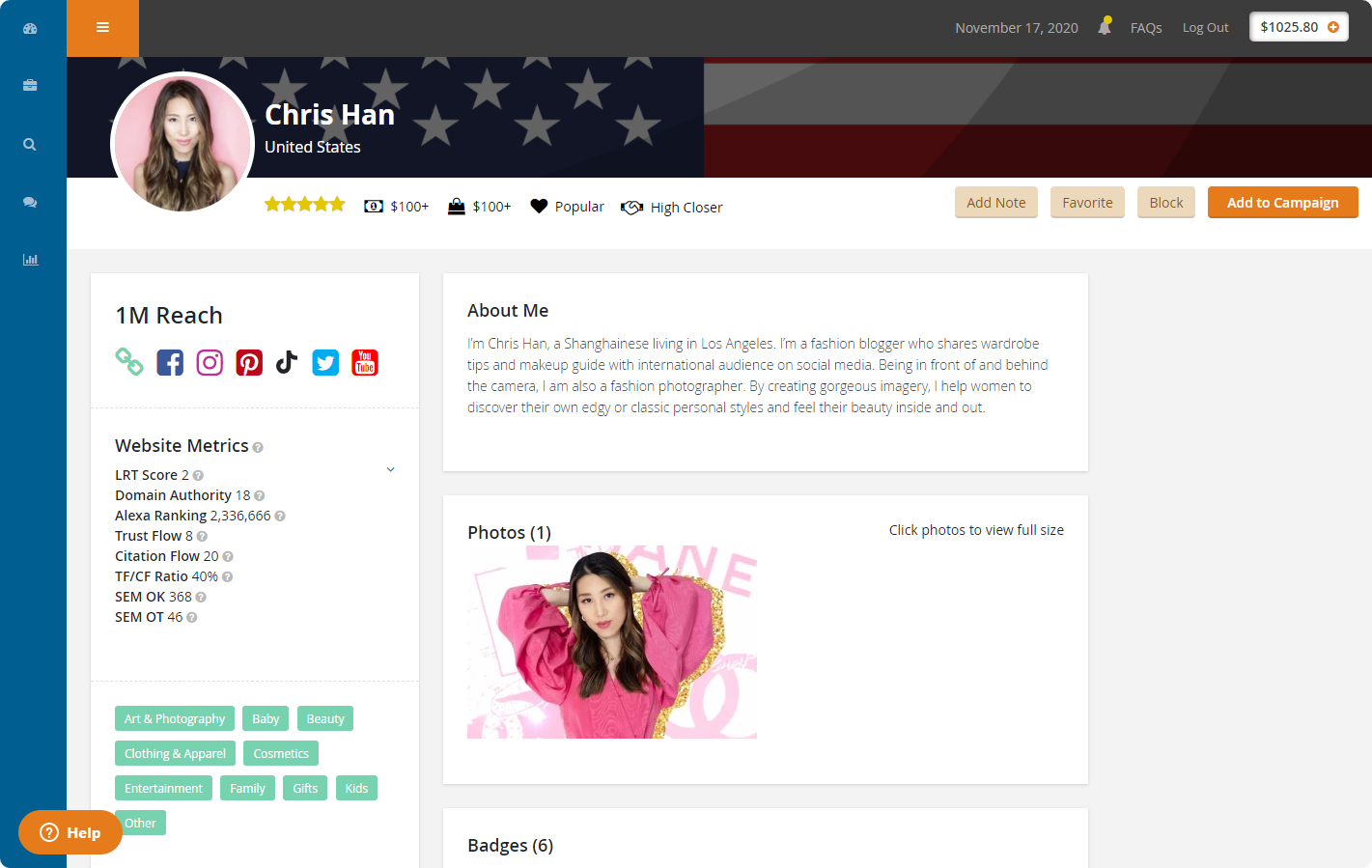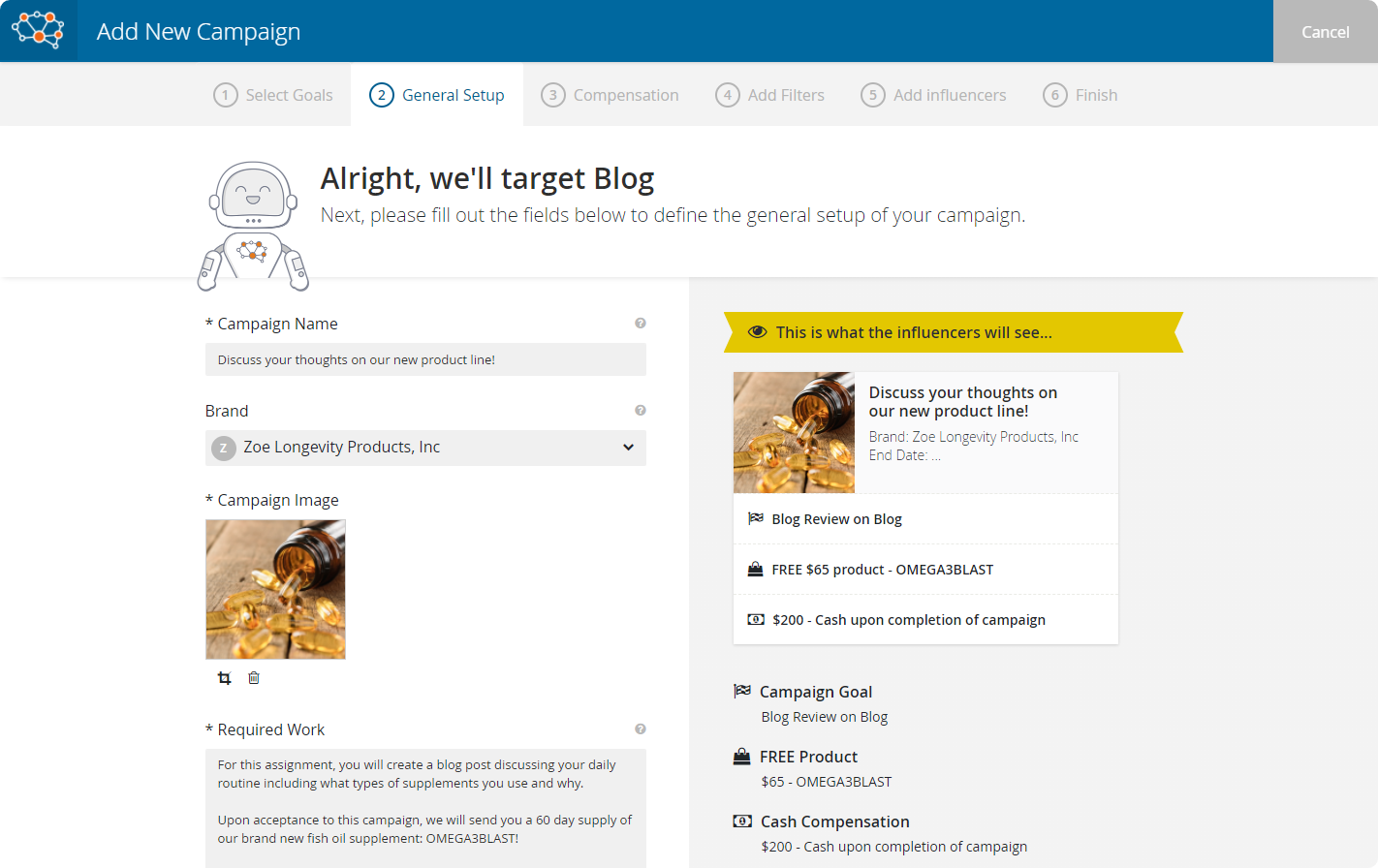Everyone wants to rank across all search engines for their desired terms.
At a certain point in the evolution of Google search, it became apparent that naturally acquiring links (such as those from bloggers) helped with that goal.
That said, algorithms change. So is it still worth it to work with bloggers?
Bloggers Are Worth Far More Than Their Links When It Comes to SEO
As a digital marketer, you are probably tasked with a series of KPIs – from rankings and traffic to conversion rates and revenue.
Is it possible to have bloggers help with all these goals?
The trick is to first stop thinking of websites and blogs as simply places to acquire links. Bloggers are influencers and need to be approached as such.
As a brief primer to influencers, the full version of which you can read in the Ultimate Guide to Influencer Marketing, there are several components to consider:
- The primary goal you are focused on.
- The buyer persona you wish to target to meet that goal.
- The type of influencer needed that best fits the buyer persona.
- What medium best suits that influencer type.
Influencer marketing is a deep subject, which during presentations we attempt to distill down into “having someone else tell your story for you.”
But given where this think piece is published, we can make a few assumptions with regards to online vs. offline intent.
What Is Your Primary Goal?
Hopefully, you didn’t say links.
Even while addressing SEO, this is not really the goal, even if it is what you might spend a good percentage of your time focused on. SEO pros also do not exist simply to supply vanity rankings, at least not for the long term.
As with most online marketing functions, the end goal is usually high margin revenue.
How does one maximize high margin revenue? By focusing on increasing the volume of relevant traffic.
Search engines are just a convenient source of this traffic.
Who Is Your Buyer Persona?
The specific end buyer for your product or service is going to be unique to your specific situation. You can go more in-depth with cultural, social, personal, and psychological factors here but for the sake of brevity, you make some assumptions related to their technical capabilities.
In this abbreviated approach, what you will need to care about most is categorical focus and fit – what type of information is your buyer consuming that is at least tangentially relevant to what you are selling? That is the category of content you need to be consistently associated with.
What Influencer Type Works Best?
In the above guide, much attention is given to the distinctions between aspirational, authoritative, and peer influencers and the various situations you might need to use each type.
When it comes to raw traffic, aspirational influencers provide the most volume, but are not always categorically focused unless you are selling a product with broad mass appeal. Conversely, peer influencers can be acquired with exceptional categorical fit yet yield much less traffic.

Authoritative influencers, for the sake of the use case of digital marketers eyeing search, are a happy compromise.
They are subject matter experts and as such are extreme category fits, provided you are only approaching relevant influencers and can drive more traffic than that of lesser-known industry peers.
What Medium Best Suits the Authoritative Influencer Type?
There are multiple mediums that work well within the confines of a search focus, which can be used before and after the primary traffic drivers are created.
The title of this article does not bury the lede though: for search purposes, the primary medium to work on with authoritative influencers is blogs, of which there are multiple ways to approach.
Let’s discuss why, and what signals blogs are helping to address, then how to implement such a strategy.
Which Search Signals Matter with Influencing Bloggers?
Simplifying for brevity once again, it can be helpful to view modern search algorithms as operating in three general buckets – signals associated with:
- Content/architecture.
- Links.
- User experience.
With the right influencers, all three buckets can be satisfied.
Before any links can ever be built, there should exist at least some meaningful content to point to. One method of this meaningful content is to hire a reasonably well-known authoritative influencer within your industry to write a series of deep and engaging pieces.
Having this content created can satisfy a multitude of content signals, not the least of which is associating the entity of this writer with your domain, leeching off of their extensive expertise.
This is not about accepting a guest post! It is about recruiting an exceptional writer within your niche to create something meaningful in your domain space.
For all the recent talk of E-A-T (expertise, authoritativeness, and trustworthiness), recruiting an expert that can convey authority and associate their accumulated trust with you allows you to cross a hurdle.
You already know that bloggers provide links, but the links you should care about have far less to do with DR, DA, or whatever metric you have been using. Reach out to influencers for the purpose of acquiring links that provide relevant, converting traffic.
When your focus shifts more to acquiring links that pass converting traffic, your mental model shifts closer to what your main goal of a digital marketer should be: high margin revenue, that just so happens to be search engine-proof.
This mental shift means you can worry less about whether the influencer wants to use “nofollow” and more about how closely themed the blog’s audience is with the buyer persona you are targeting.
The bonus point in acquiring relevant, converting traffic is how it also satisfies a variety of user signals.
The traffic coming in is relevant enough to linger and dwell, navigating to the most important sections, and entering some aspect of your conversion funnel.
When traffic is truly relevant, there also exists the possibility of secondary branded searches occurring to seek out deeper content in the future, which increases the probability of attaining a higher percentage of repeat users. In the opinion of many top SEO pros, this is an especially important signal.
“Remember when reaching out to these bloggers to keep your focus consistent throughout: relevance is vital, converting traffic above all else.”
What Does the Ideal Influencer Campaign for SEO Look Like?
Piecing together the above concepts, one can create a powerful influencer campaign to maximize as many search signals as possible with the end goal of not just ranking but driving that high-margin, revenue-bearing traffic.
Step 1: Hire Multiple Appropriate Authoritative Influencers to Create Deep & Engaging Content
Have at least one of these influencers focusing on creating video content for your YouTube channel and one influencer creating material for your blog.
Step 2: Have Those Influencers at a Minimum Promote the Content They Created for You to Their Own Audiences
On YouTube especially, this can be as simple as including it in their recommended videos and by linking to it voraciously in the description of other relevant videos on their channel.

Step 3: Incorporate the Video Content Created for You Into Your Site
Video content can be repurposed in a variety of ways for transcriptions and snippets, but the main goal is to embed your channel version of the video on your site.
Step 4: Reach Out to Other Authoritative Influencing Bloggers
Reach out to your list of other authoritative influencing bloggers for the purposes of having them write about your product or service, linking into the useful materials your other influencers have already created. Keep your focus on acquiring relevant traffic that you can convert.
Step 5: Incorporate Your Own Think Pieces Onto Other Authoritative Influencer Sites
It isn’t about guest blogging for links. By collaborating with one or more experts in the field and including yourself in the conversation (for publication on the authoritative influencer’s site), you can increase your own authoritative influence when this is done repeatedly over long periods of time.
Keep the focus consistent on relevancy and authority – your goal should be to attempt to elevate your current standing in the industry to that of an expert by highlighting your grasp of the subject in a unique fashion, which just so happens to yield relevant traffic.
Step 6: Expand Outward Now to Peer-Level Influencers.
Every industry is expertise constrained, so after some period of time it will be necessary to expand beyond experts and also include on peer level influencers. In these instances, you will be looking for reactions to the expert-level content and summations of your product or service from the peer’s own perspective to your buying audience.
Step 7: Amplify Your Efforts
For this final step, the goal is to push as much positive margin traffic as you can through the authoritative and peer-level content that exists not just on your site, but also on the sites of the influencers you worked with.
This will only make sense to do if you have relentlessly focused on influencer relevance, as amplified content across Twitter, Facebook, and LinkedIn will only back out on a ROAS if the traffic passed through those content pieces converts in a meaningful way.
Once you have completed the seven steps, repeat the process ad nauseam.
The more authoritative content you can layer into your site, the easier it will be to acquire highly relevant traffic from authoritative sources, which will end up resulting in a delightful rankings outcome as a side effect.
Think of it as your new SEO compulsion loop.
Looking for quality bloggers
that encourage more relevant traffic?
The opinions expressed in this article are the sponsor's own.



